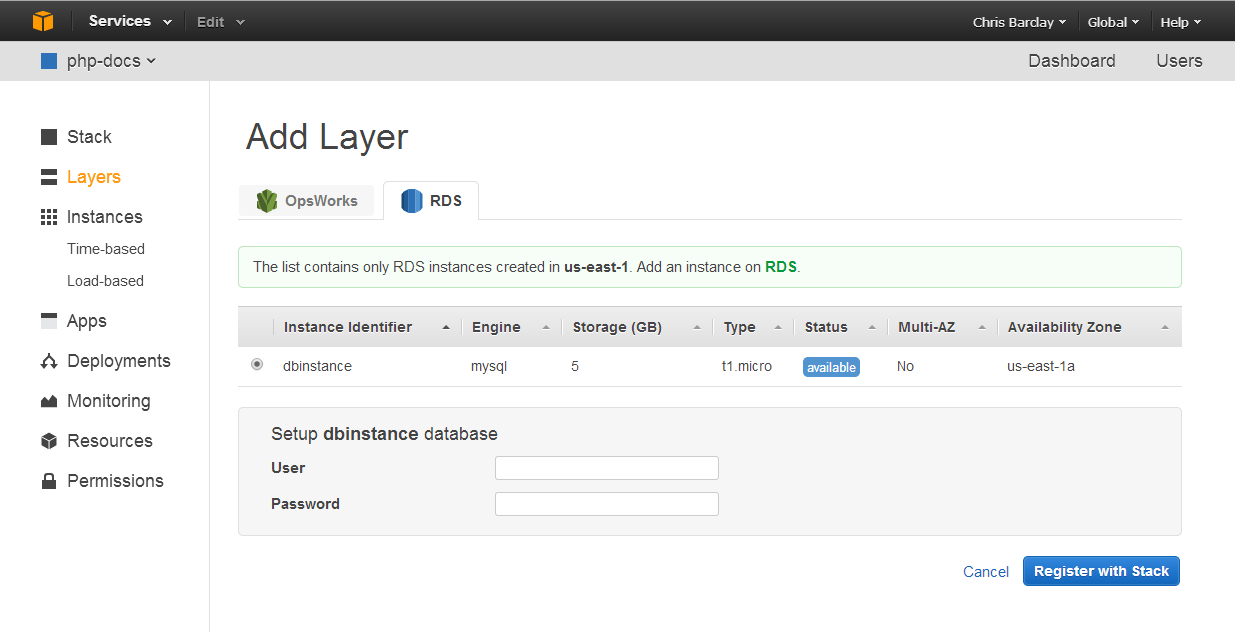AWS News Blog
AWS OpsWorks With Amazon RDS
AWS OpsWorks is an application management service. You define your application as a set of layers within a stack. Each stack provides information about the packages to be installed and configured, and can also provision any necessary AWS resources, as defined within a particular OpsWorks Layer. OpsWorks also scales your application as needed, driven by workload or on a predefined schedule.
The Amazon Relational Database Service (RDS) takes care of all of the tedious, low-level system and database management work that you would end up doing yourself if you were hoping to use MySQL, Oracle Database, SQL Server, or PostgreSQL. You can let RDS handle the hardware provisioning, the operating system and database installation, setup, and patching, scaling, backups, fault detection and failover, and much more.
Today we are marrying OpsWorks and RDS, giving you the ability to define and use an RDS Service Layer to refer to an RDS database instance that you have already created within the AWS Region that serves as home to the OpsWorks stack for your application. This is in addition to the existing OpsWorks support for MySQL layers.
You can define an RDS Server Layer from within the AWS Management Console like this:

You will need to know the user name and password for the database instance in order to create the RDS Service Layer (this information is passed along to the application). You can always edit the layer later if you don’t have this information handy or if you change the user name and/or password in the future.
Note: Because all OpsWorks stacks access AWS resources and services through an IAM (Identity and Access Management) role, you may need to update the role accordingly. OpsWorks will detect this situation and offer to address it.
After you add the RDS Service Layer to the stack, OpsWorks will assign it an ID and add information about the database instance to the stack configuration and to the deployment JSON, where it can be accessed through the [:database] attribute. OpsWorks also provides helper functions to provide access to the connection details when used in conjunction with the Ruby, PHP, and Java application server layers.
As usual, this new feature is available now and you can start using it today. Consult the Database Layers section of the OpsWorks User Guide to learn more.
— Jeff;